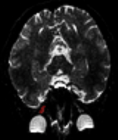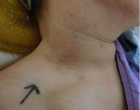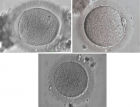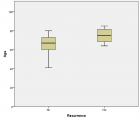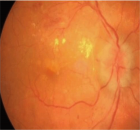Abstract
Research Article
Role of community health fairs in providing health services, improving health of rural residents
Trina Aguirre*, Justine Jobman, Ann Koehler, Wendy Wells and Leeza Struwe
Published: 11 May, 2020 | Volume 4 - Issue 1 | Pages: 042-045
Introduction: Obesity (BMI ≥ 30 kg m-2) is epidemic globally and is associated with increased risk for a wide range of physical and mental health comorbidities. This is a particular concern for rural residents who have a greater rate of obesity than urban residents, but are disadvantaged in obtaining care because of a shortage of health care professionals. Community health fairs provide an opportunity for rural residents to receive health care services and education at reduced or no cost. Therefore, this study explored the role of community health fairs for providing health services and improving the health of residents in a rural community where obesity is a serious health concern.
Methods: This study involved a retrospective longitudinal analysis of data collected during community health fairs conducted in a rural western Nebraska, USA community during 2014, 2015, and 2016 (n = 83). The Planned Approach to Community Health (PATCH) framework was used to target health education in this rural community. This approach involved 1. Mobilizing the community (via health fairs), 2. Collecting and organizing data (from consented attendees), 3. Selecting health priorities (obesity), 4. Developing a comprehensive intervention (nutrition and physical activity education), and 5. Evaluating the effectiveness of the framework (declines in measures of obesity over time). Analyses characterized BMI, percent body fat, visceral fat, and BP and explored differences between genders. The sample was recruited by advertising with flyers for health fairs at the College of Nursing. Most booths provided printouts of results for participants in order for them to keep and track their health information. Once potential participants arrived at the health fair site, there were asked if they would like to participate in the study via an invitation letter. They could then decline or sign the consent.
Results: Percent body fat and visceral fat level differed between genders (p = < .001 and .001, respectively). Mean body fat levels (women 39.4%, men 28.8%) were unhealthy. Mean visceral fat level was unhealthy in men (16), but healthy in women (10). BMI and systolic and diastolic blood pressure did not differ between genders. Mean BMI was 31 kg m-2; 33% of participants were overweight, 44% were obese. Mean systolic and diastolic BP were 134 and 78 mg Hg, respectively. Most participants were hypertensive (systolic: men 57%, women 32%; diastolic: men 24%, women 7%) or prehypertensive (systolic: men 21%, women 39%; diastolic: men and women 36%).
Conclusion: Obesity and high BP were common in this rural population, supporting the need for effective education and intervention efforts to address these health issues. Health fairs provide a manner in which to reach community persons needing referrals to local clinics, mental health providers and physicians. Education provided at such events is valuable as well and may in fact be the only health care contact they receive. Though community health fairs provide an economical way for individuals to receive screenings and health information, few men participated and few individuals attended in multiple years. The lack of repeat attendees prevented assessment of the efficacy of the education intervention. Means of enhancing participation, particularly by men and previous attendees, need to be explored. Repeatedly attending health fairs enables participants to monitor their progress, seek physical and mental health screenings and discuss any health concerns and helps researchers assess the efficacy of interventions.
Read Full Article HTML DOI: 10.29328/journal.apmh.1001017 Cite this Article Read Full Article PDF
Keywords:
Blood pressure; Body mass index; Body composition; Community health fairs; Hypertension; Obesity; Percent body fat; Rural health; Mental health
References
- Obesity and overweight. 2018. https://www.who.int/news-room/fact-sheets/detail/obesity-and-overweight..
- Centers for Disease Control and Prevention contributors. Overweight & obesity: Adult obesity causes & consequences. 2017. https://www.cdc.gov/obesity/adult/causes.html
- 10 Facts on obesity. 2017. https://www.who.int/features/factfiles/obesity/en/
- Finkelstein E, Trogdon J, Cohen J, Dietz W. Annual medical spending attributable to obesity: payer-and service-specific estimates. Health Aff (Millwood). 2009; 28: w822-w831. PubMed: https://www.ncbi.nlm.nih.gov/pubmed/19635784
- Befort C, Nazir N, Perri M. Prevalence of obesity among adults from rural and urban areas of the United States: Findings from NHANES (2005-2008). J Rural Health. 2012; 28: 392-397. PubMed: https://www.ncbi.nlm.nih.gov/pubmed/23083085
- Bolin J, Bellamy G, Ferdinand A, Vuong A, Kash B, et al. Rural healthy people 2020: New decade, same challenges. J Rural Health. 2015; 31: 326-333. PubMed: https://www.ncbi.nlm.nih.gov/pubmed/25953431
- Kreuter M. Patch: Its origin, basic concepts, and links to contemporary public health policy. J Health Edu. 1992; 23: 135-139.
- United States Census Bureau. QuickFacts: Scottsbluff city, Nebraska; United States. 2019. https://www.census.gov/quickfacts/fact/table/scottsbluffcitynebraska,US/PST045218
- Freedman D, Khan L, Serdula M, Ogden C, Dietz W. Racial and ethnic differences in secular trends for childhood BMI, weight, and height. Obesity (Silver Spring). 2006; 14: 301- 308. PubMed: https://www.ncbi.nlm.nih.gov/pubmed/16571857
- Griffiths C, Gately P, Marchant P, Cooke C. Cross-sectional comparisons of BMI and waist circumference in British children: Mixed public health messages. Obesity (Silver Spring). 2012; 20: 1258-1260. PubMed: https://www.ncbi.nlm.nih.gov/pubmed/21959348
- Després J. Body fat distribution and risk of cardiovascular disease: an update. Circulation. 2012; 126: 1301-1313. PubMed: https://www.ncbi.nlm.nih.gov/pubmed/22949540
- Shuster A, Patlas M, Pinthus J, Mourtzakis M. The clinical importance of visceral adiposity: A critical review of methods for visceral adipose tissue analysis. Br J Radiol. 2012; 85: 1-10. PubMed: https://www.ncbi.nlm.nih.gov/pubmed/21937614
- US Department of Health and Human Services. The seventh report of the Joint National Committee on Prevention, Detection, Evaluation, and Treatment of High Blood Pressure. US Department of Health and Human Services, National Institutes of Health, National Heart, Lung, and Blood Institute, National High Blood Pressure Education Program, 2004. NIH Publication No. 04-5230.
- Aguirre T, Koehler A, Wilhelm S. Bio-impedance analysis measures in a rural Latina community. J Public Health Frontier. 2014; 3: 1-3.
- Aguirre T, Wells W, Koehler A. Prevalence of underhydration and its association to cardiovascular risk factors in a rural community setting. Ann Public Health Res. 2016; 3: 1048.
- Aguirre T, Koehler A, Tovar A. Relationship among hypertension, waist circumference, and body composition in a rural Mexican-American population. J Family Med Commun Health. 2015; 2: 1057.
Similar Articles
-
Comparison of Cardiovascular Risks following Smoking Cessation Treatments Using Varenicline vs. NRT among Schizophrenic SmokersSusan Abughosh*,I-Hsuan Wu,Hua Chen,Ekere James Essien,Michael Johnson,Patrick Bordnick2,Ronald J Peters. Comparison of Cardiovascular Risks following Smoking Cessation Treatments Using Varenicline vs. NRT among Schizophrenic Smokers. . 2017 doi: 10.29328/journal.apmh.1001001; 1: 001-010
-
Impact of four obesity interventions on biometric measures of individuals positive and negative for food addictionTrina Aguirre*,Leeza Struwe,Ann Koehler,Rebecca Kreman,Rebecca Bowman,Erica Schulte,Kayla Pierce,Molly Bloodgood,effrey Holloway. Impact of four obesity interventions on biometric measures of individuals positive and negative for food addiction. . 2018 doi: 10.29328/journal.apmh.1001002; 2: 001-0005
-
Mental health promotion program in the workplace with focus on transportOlaf Jensen*,Fereshteh Baygi,George Charalambous,Agnes Flores,Lise Hedegaard Laursen,David Lucas,Debbie Andrioti. Mental health promotion program in the workplace with focus on transport. . 2019 doi: 10.29328/journal.apmh.1001004; 3: 001-011
-
Diseases of the mental sphere revealed by the psychiatrist at contingent of patients of the consultative outpatient admissionShapovalova LA*,Shapovalov КA. Diseases of the mental sphere revealed by the psychiatrist at contingent of patients of the consultative outpatient admission. . 2019 doi: 10.29328/journal.apmh.1001005; 3: 012-019
-
Effectiveness of ethinyl oestradiol /cyproterone acetate and ethinyl oestradiol/ desogestrel with or without low-dose metformin on perceived health-related quality of life in hirsute women with polycystic ovary disease: A randomised, double-blind, placebo-controlled studySanjeewani Fonseka*,B Subhani,V Alahakoon,CN Wijeyaratne,IB Gawarammana,NS Kalupahana,N Ratnatunga,S Rosairo,PVR Kumarasiri. Effectiveness of ethinyl oestradiol /cyproterone acetate and ethinyl oestradiol/ desogestrel with or without low-dose metformin on perceived health-related quality of life in hirsute women with polycystic ovary disease: A randomised, double-blind, placebo-controlled study. . 2019 doi: 10.29328/journal.apmh.1001007; 3: 025-031
-
Staff experiences of the REFOCUS intervention to support recovery in mental health: A qualitative study nested within a cluster randomized controlled trialM Leamy*,R Macpherson,G Riley,K Sanger,E Clarke,V Bird,M Janosik,H Jordan,C Le Boutillier,J Williams,M Slade. Staff experiences of the REFOCUS intervention to support recovery in mental health: A qualitative study nested within a cluster randomized controlled trial. . 2020 doi: 10.29328/journal.apmh.1001014; 4: 024-032
-
Implications on mental health by the coronavirus disease 2019 (COVID-19) pandemic: The role of general practitionerJose Luis Turabian*. Implications on mental health by the coronavirus disease 2019 (COVID-19) pandemic: The role of general practitioner. . 2020 doi: 10.29328/journal.apmh.1001016; 4: 035-041
-
Role of community health fairs in providing health services, improving health of rural residentsTrina Aguirre*,Justine Jobman,Ann Koehler,Wendy Wells,Leeza Struwe. Role of community health fairs in providing health services, improving health of rural residents. . 2020 doi: 10.29328/journal.apmh.1001017; 4: 042-045
-
Targeted community outreach events to deliver healthcare to diverse rural populationsTrina Aguirre*,Nancy Meier,Kelly Betts,Ann Koehler. Targeted community outreach events to deliver healthcare to diverse rural populations. . 2020 doi: 10.29328/journal.apmh.1001021; 4: 060-062
-
Health professional stress during COVID-19 pandemicFatiha Bennaoui*,Nadia Ei Idrissi Slitine,Fadl Mrabih Rabou Maoulainine. Health professional stress during COVID-19 pandemic. . 2020 doi: 10.29328/journal.apmh.1001023; 4: 070-072
Recently Viewed
-
Drinking-water Quality Assessment in Selective Schools from the Mount LebanonWalaa Diab, Mona Farhat, Marwa Rammal, Chaden Moussa Haidar*, Ali Yaacoub, Alaa Hamzeh. Drinking-water Quality Assessment in Selective Schools from the Mount Lebanon. Ann Civil Environ Eng. 2024: doi: 10.29328/journal.acee.1001061; 8: 018-024
-
Rapid Microbial Growth in Reusable Drinking Water BottlesQishan Liu*,Hongjun Liu. Rapid Microbial Growth in Reusable Drinking Water Bottles. Ann Civil Environ Eng. 2017: doi: 10.29328/journal.acee.1001007; 1: 055-062
-
Beneficial effects of a ketogenic diet in a woman with Charcot-Marie-Tooth diseaseElvira Rostanzo,Anna Maria Aloisi*. Beneficial effects of a ketogenic diet in a woman with Charcot-Marie-Tooth disease. Arch Food Nutr Sci. 2022: doi: 10.29328/journal.afns.1001040; 6: 068-072
-
Isolation and Influence of Carbon Source on the Production of Extracellular Polymeric Substance by Bacteria for the Bioremediation of Heavy Metals in Santo Amaro CityLeila Thaise Santana de Oliveira Santos*, Kayque Frota Sampaio, Elisa Esposito, Elinalva Maciel Paulo, Aristóteles Góes-Neto, Amanda da Silva Souza, Taise Bomfim de Jesus. Isolation and Influence of Carbon Source on the Production of Extracellular Polymeric Substance by Bacteria for the Bioremediation of Heavy Metals in Santo Amaro City. Ann Civil Environ Eng. 2024: doi: 10.29328/journal.acee.1001060; 8: 012-017
-
Management and use of Ash in Britain from the Prehistoric to the Present: Some implications for its PreservationJim Pratt*. Management and use of Ash in Britain from the Prehistoric to the Present: Some implications for its Preservation. Ann Civil Environ Eng. 2024: doi: 10.29328/journal.acee.1001059; 8: 001-011
Most Viewed
-
Evaluation of Biostimulants Based on Recovered Protein Hydrolysates from Animal By-products as Plant Growth EnhancersH Pérez-Aguilar*, M Lacruz-Asaro, F Arán-Ais. Evaluation of Biostimulants Based on Recovered Protein Hydrolysates from Animal By-products as Plant Growth Enhancers. J Plant Sci Phytopathol. 2023 doi: 10.29328/journal.jpsp.1001104; 7: 042-047
-
Sinonasal Myxoma Extending into the Orbit in a 4-Year Old: A Case PresentationJulian A Purrinos*, Ramzi Younis. Sinonasal Myxoma Extending into the Orbit in a 4-Year Old: A Case Presentation. Arch Case Rep. 2024 doi: 10.29328/journal.acr.1001099; 8: 075-077
-
Feasibility study of magnetic sensing for detecting single-neuron action potentialsDenis Tonini,Kai Wu,Renata Saha,Jian-Ping Wang*. Feasibility study of magnetic sensing for detecting single-neuron action potentials. Ann Biomed Sci Eng. 2022 doi: 10.29328/journal.abse.1001018; 6: 019-029
-
Pediatric Dysgerminoma: Unveiling a Rare Ovarian TumorFaten Limaiem*, Khalil Saffar, Ahmed Halouani. Pediatric Dysgerminoma: Unveiling a Rare Ovarian Tumor. Arch Case Rep. 2024 doi: 10.29328/journal.acr.1001087; 8: 010-013
-
Physical activity can change the physiological and psychological circumstances during COVID-19 pandemic: A narrative reviewKhashayar Maroufi*. Physical activity can change the physiological and psychological circumstances during COVID-19 pandemic: A narrative review. J Sports Med Ther. 2021 doi: 10.29328/journal.jsmt.1001051; 6: 001-007

HSPI: We're glad you're here. Please click "create a new Query" if you are a new visitor to our website and need further information from us.
If you are already a member of our network and need to keep track of any developments regarding a question you have already submitted, click "take me to my Query."







